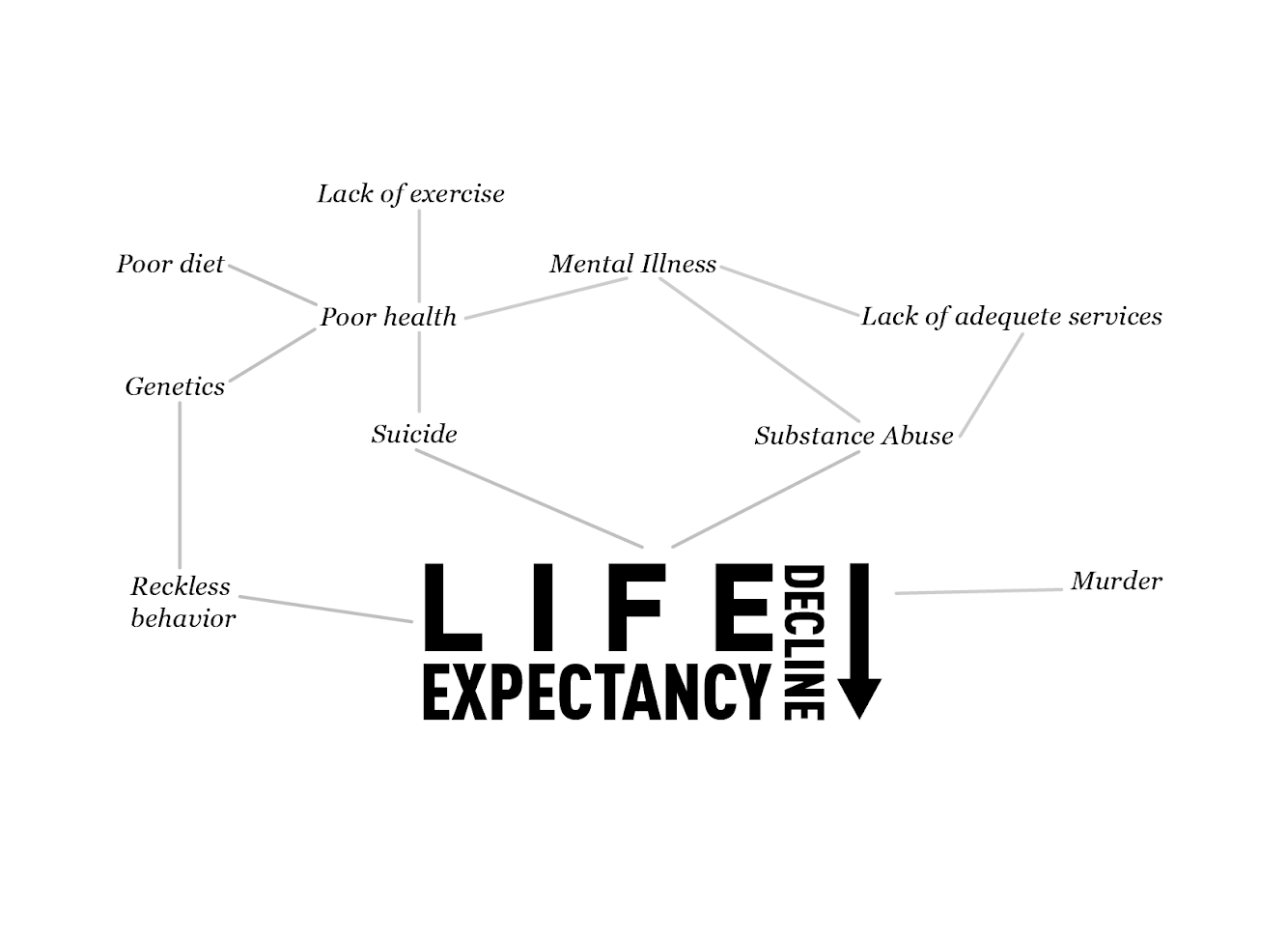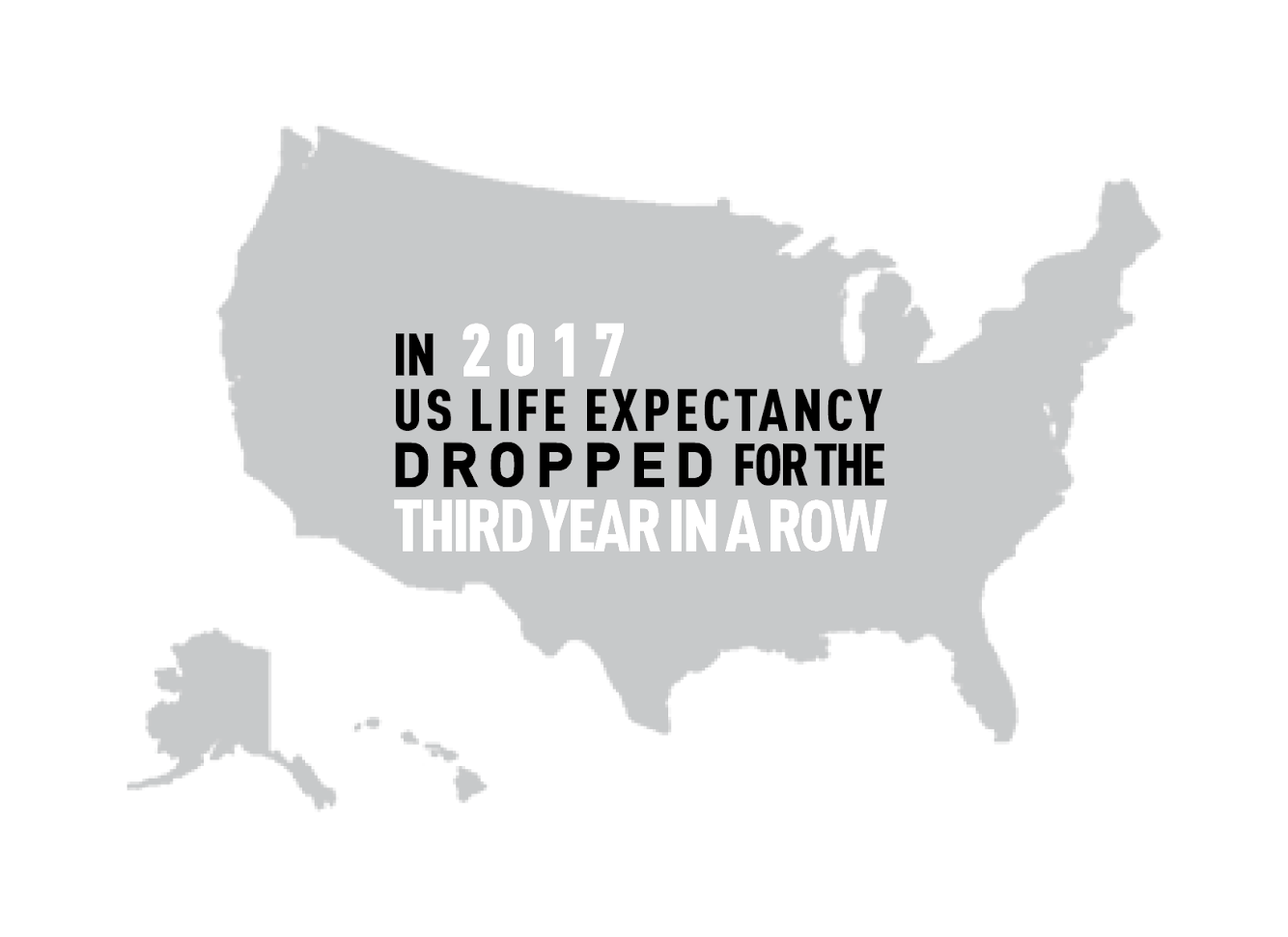As of late, the life expectancy in the U.S. has been on a decline. Although 2018 has yet to be documented, 2017 was the third year in a row to reflect this decline. In 2017, life expectancy was 78.6 years, which was down 1/10 from 2016. This is the lowest it’s been since WWI (1915–1918). In that time, both WWI and the flu epidemic killed 675,000 Americans and 50,000,000 worldwide.
This decline signifies problems in our nation’s societal and economic conditions as well as the poor quality of our healthcare services. Can a change be made in the new year?
The Effects of Substance Abuse
There are quite a few factors that have a significant impact on Americans' life expectancy.
Dr. Rebecca Houston is an assistant professor in the RIT Department of Psychology and is affiliated with the Health Addiction and Research Center (HARK). She explained that substance abuse is arguably the most influential factor in regards to life expectancy.
“Substance abuse disorders lead to shorter lifespans, but they vary depending on the substance itself and the rate of usage,” Houston said.
A big part of substance abuse is the rise in opioid use. Some opioids are originally prescribed as legal medications (OxyContin, Vicodin, morphine). These, or illegal opioids in general (heroin), are being abused.
Dr. Joseph Baschnagel, the chair of the RIT Department of Psychology, explained further on drug abuse.
“When it’s time to get off the medication, people are too dependent on the drugs to let them go. Now those people are going looking for those painkillers on the black market,” Baschnagel said. “The problem is that on the black market, the medications aren’t controlled as they are in a pharmaceutical environment. If you buy something off of the street, you don’t know what else is in it.”
Fentanyl is an opioid that has become a large problem recently — a problem larger than heroin. Fentanyl is much more powerful and dangerous, as it is 25 to 50 times more potent than heroin. It takes very little of it to have the same effect as other opioids.
"People may think that they are buying heroin when Fentanyl has actually been added to it without their knowledge ... Your dealer may say it’s one thing, when in fact there are additives in there that are much more addictive,” Baschnagel said.
But, the issue is that many people who are involved with drugs rely on them to limit their stress, or help themselves get through the day. Therefore, care for safety is lacked as their need for a drug increases.
“Stress management has been linked to drug use. It may not even be purposeful,” Baschnagel explained. “In the long run, it is a very unhealthy way of coping. We need to start to teach more constructive, beneficial coping and relaxation techniques.”
There are many different routes we could take to change these devastating numbers.
“Intervention at a young age is key. We need a prevention program designed to prevent child substance abuse. The previous design of ‘just saying no’ didn’t work. It’s easier said than done. A good way to do this is through research,” Houston said.
Houston explained further on one particularly difficult factor that must occur — a shift in culture. But Baschnagel had a different approach.
“In order to prevent overdose, we have to be informed about the use of opioids, and what form it would take in someone we know. We need to know what types of medications put people at risk so we can keep an eye on loved ones. If they’re beginning to withdraw from others and becoming more secretive, they may have become addicted to opioids,” he stated.
The Effects of Suicide
Another significant factor that is actively bringing down Americans' life expectancy is suicide. Keith Humphreys is a professor of psychiatry and behavioral sciences at Stanford University, who further explained this devastating factor.
“The frustration that many of us feel is that there are things that could save many lives [from suicide], and we are failing to make those services available,” Humphreys said.
With a lack of resources, suicide has become similar to substance abuse in its effect on life expectancy. Baschnagel explained that individuals who commit suicide are bringing down our overall life expectancy, as they are shortening their life span.
"The earlier people die, the more the mean [or average] life expectancy of the population is pulled down," Baschnagel said.
Most suicides are attempted by those who suffer from a mental illness, but mental health and suicide are a complicated matter. Some suicides are committed by those who have no history of mental illness at all.
“It’s a misconception that all of the people that commit suicide have a mental health disorder,” said Baschnagel. "[However,] if you have a mental health disorder, you may be at greater risk of committing suicide."
Houston explained that if you have a substance abuse disorder, you are even more likely to commit suicide. So, getting help is an important factor to decrease your likelihood of developing suicidal thoughts, no matter if you have or don't have a mental illness, or a sustenance abuse coping habit.
Other Factors
There are some less troubling factors that affect our life expectancy as well.
" ... murder, our personalities [risky behaviors], genetics, our friends, diet, and exercise [have an affect]," Houston stated.
Homicide cuts our lives short similar to substance abuse and suicide. The more people that are killed, the more life expectancy decreases in the U.S. In 2017, almost 2,000 people were murdered in California alone. In Texas, the number neared 1,500. In Florida, there were over 1,000.
Genetics also decide whether or not you will live a long and healthy life; this is assuming the said individual makes it to retirement age. There are even some genetics that protect against age-related illness such as cancer, dementia, and cardiovascular disease.
Life expectancy also takes a blow from risky behaviors due to peer pressure or our friends. Risky behaviors include things such as riding a bicycle without a helmet, not wearing a seatbelt, riding shotgun with a drunk driver or texting while driving. One particularly risky behavior is having unprotected sex.
Your eating behaviors and what you choose to eat, can also be significant factors in life expectancy. But it’s not just eating too much, it’s about making the right food choices.
"Your exercise and diet are behaviors that have a huge psychological component. Many people have habits of not eating well or exercising,” Baschnagel said. “When you first start to exercise it’s difficult; you feel sore the next day. It feels like a punishment, making it difficult to continue.”
There is much to learn when it comes to opioids and suicide and other factors less troubling. We have to know what to look out for, and how to prevent further injury to our population. There is much to do in our country to better our life expectancy. We can't "live the American dream" when all Americans do is risk their lives.
Edited Feb. 9, 2019 at 12:26 p.m.: Quotes from Dr. Joseph Baschnagel were edited to provide clear and accurate information of suicides relation to life expectancy. The concern was that the original quotes lacked sufficient context and could be misinterpreted.









